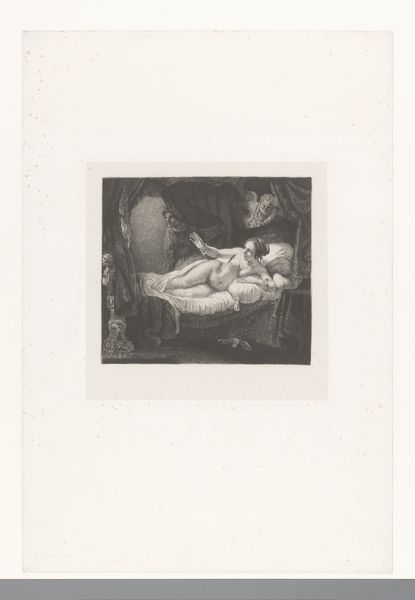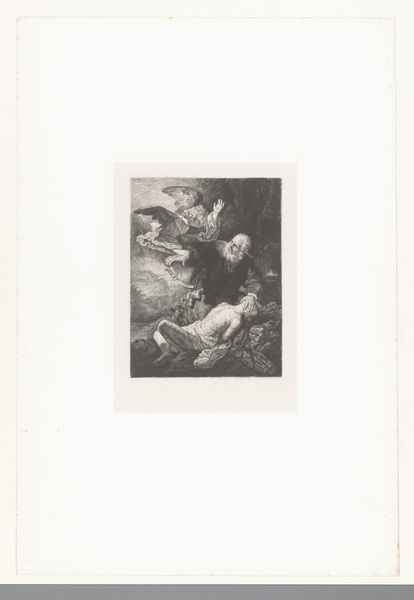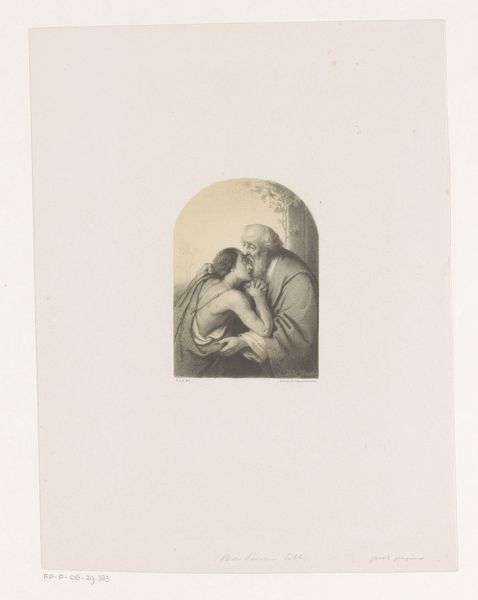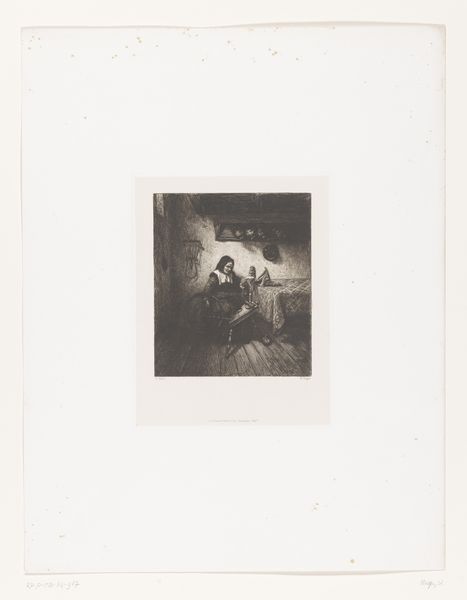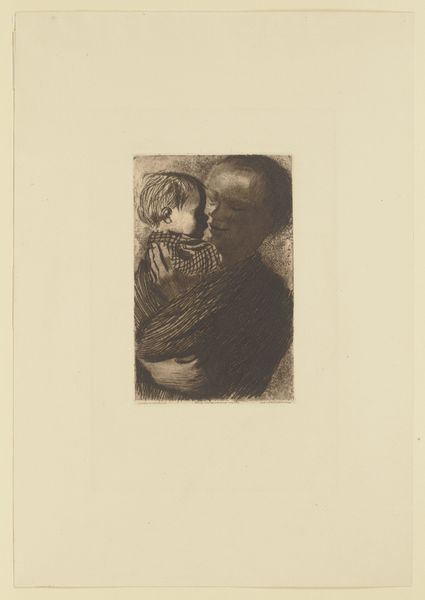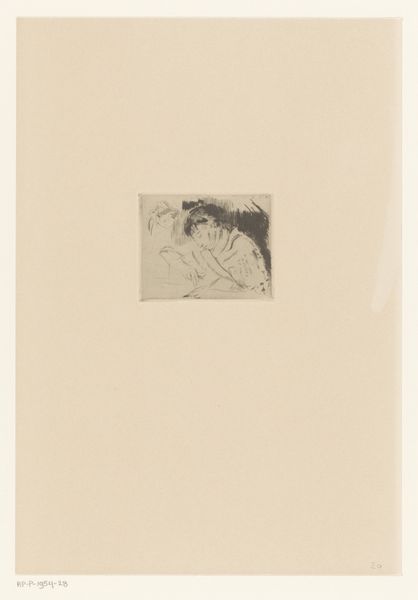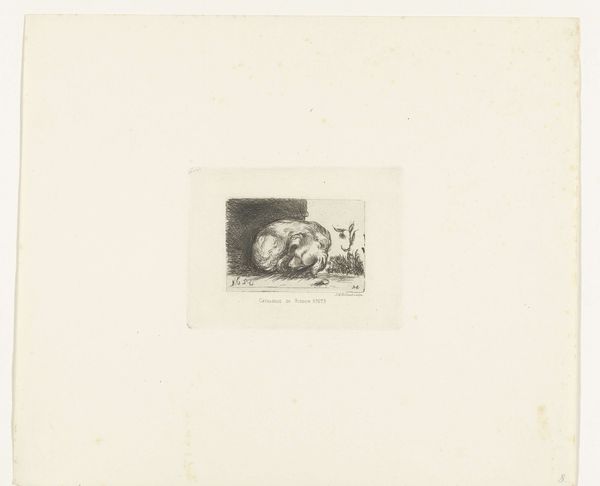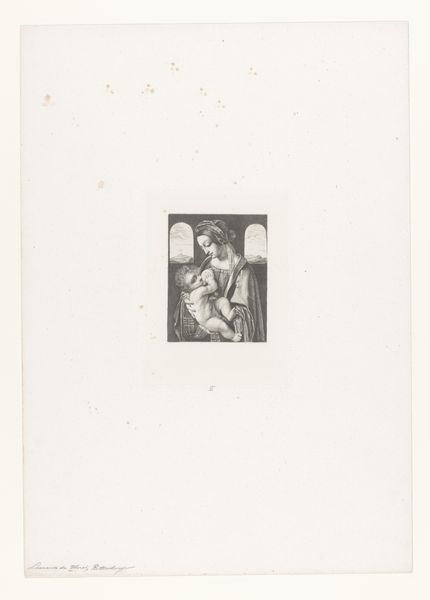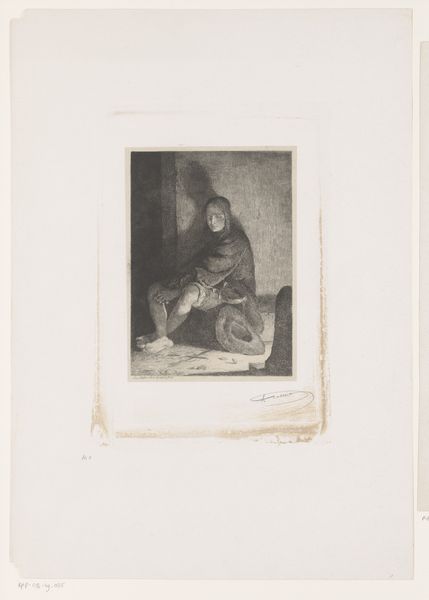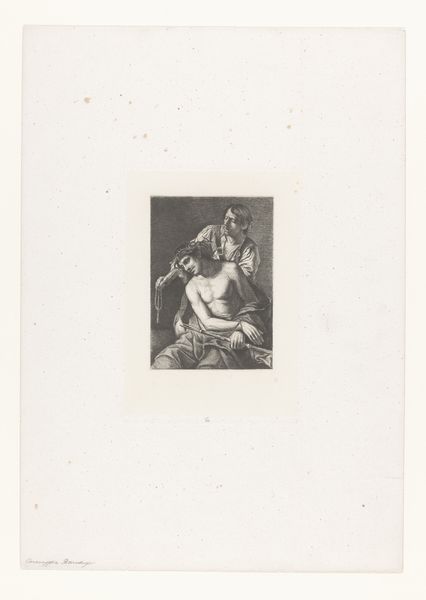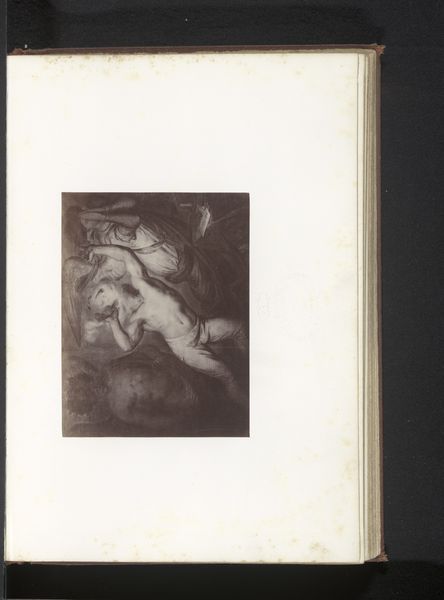
print, etching, paper
#
narrative-art
# print
#
etching
#
figuration
#
paper
#
symbolism
#
genre-painting
Dimensions: height 253 mm, width 188 mm
Copyright: Rijks Museum: Open Domain
Editor: This is “Heilige Familie met engelen,” or “Holy Family with Angels,” by Nikolay Semyonovich Mosolov, likely created sometime between 1857 and 1914. It's a print, an etching on paper, and the scene feels so intimate and dreamlike. I'm struck by how the figures seem suspended between the earthly and the divine. How do you interpret this work? Curator: This print invites us to consider the evolving representations of motherhood and family in the late 19th and early 20th centuries. While seemingly traditional, its symbolic style can be viewed as a subtle commentary on the idealized, often unattainable, image of domesticity propagated during that era. Consider the labor involved, both physical and emotional. Does the inclusion of angels serve to elevate the maternal figure, or perhaps highlight the burdens placed upon her by societal expectations and religious doctrine? What do you make of that duality? Editor: That’s interesting. I initially saw it as a straightforward religious image, but thinking about the expectations placed on women at that time definitely shifts my perspective. The etching's fine lines create such a soft, ethereal quality. I wonder if that contributes to the feeling of the mother being almost overwhelmed. Curator: Precisely. The delicate nature of the medium can be read as fragility. This piece speaks volumes about the Madonna figure and family structures. The angels, perhaps, also allude to the lack of tangible worldly support for new mothers and children. Editor: So, you're saying the "symbolism" might be speaking to contemporary issues about family structures? I guess, at the time, what issues might families and mothers encounter? Curator: The pressures on mothers to conform to societal ideals, the challenges of raising children with limited resources, the imbalance of domestic labor, to name a few. This work, though seemingly traditional, quietly questions those structures, subtly offering a perspective that acknowledges the complex realities of womanhood and motherhood. Editor: This has really broadened my understanding. I thought I was just seeing a historical print, but it holds so much social commentary, and brings in a more social approach to the symbolism within the artwork! Curator: Exactly! And hopefully that is something you will carry on with your work. Now when you view similar art you can consider the impact on marginalized people, in both the artist’s time and in ours.
Comments
No comments
Be the first to comment and join the conversation on the ultimate creative platform.
